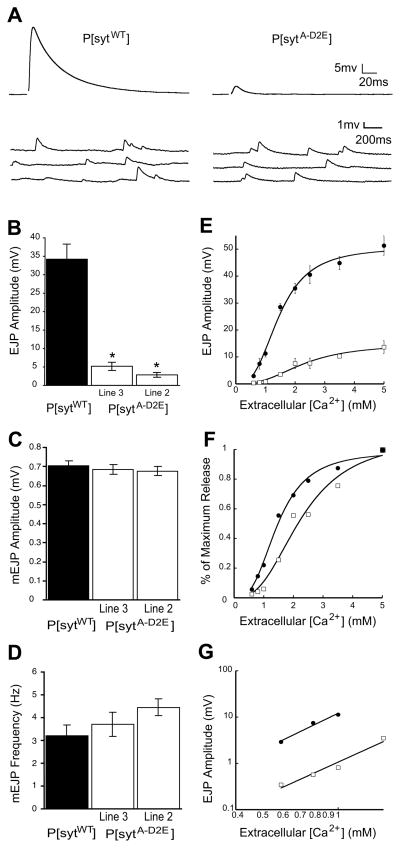Figure 3.
Synchronous evoked release is severely impaired in C2A Ca2+-binding mutants, but spontaneous release remains unchanged. A) Representative traces of EJPs and mEJPs recorded in saline containing 1.5 mM [Ca2+]. B) Mean EJP amplitude was markedly decreased in P[sytA-D2E] mutants compared to P[sytWT] controls (mean ± s.e.m., * p≪0.001, one way ANOVA). Neither mEJP amplitude (C, mean ± s.e.m., p>0.7, one way ANOVA) nor frequency (D, mean ± s.e.m., p>0.15, one way ANOVA) vary significantly between P[sytA-D2E] mutants compared to P[sytWT] controls. E) EJP amplitude vs. [Ca2+] fit with the Hill equation. Error bars, where visible, are s.e.m. For all panels, black circles indicate P[sytWT], white squares indicate P[sytA-D2E]. F) Ca2+ dose response data normalized to the maximal response in each line to illustrate the decrease in apparent Ca2+ affinity in the P[sytA-D2E] mutant. G) EJP amplitudes within the non-saturating range of Ca2+ on a double-log plot demonstrate that the Ca2+ cooperativity of release is not changed in the P[sytA-D2E] mutants. A linear regression line was used to determine the slope.

